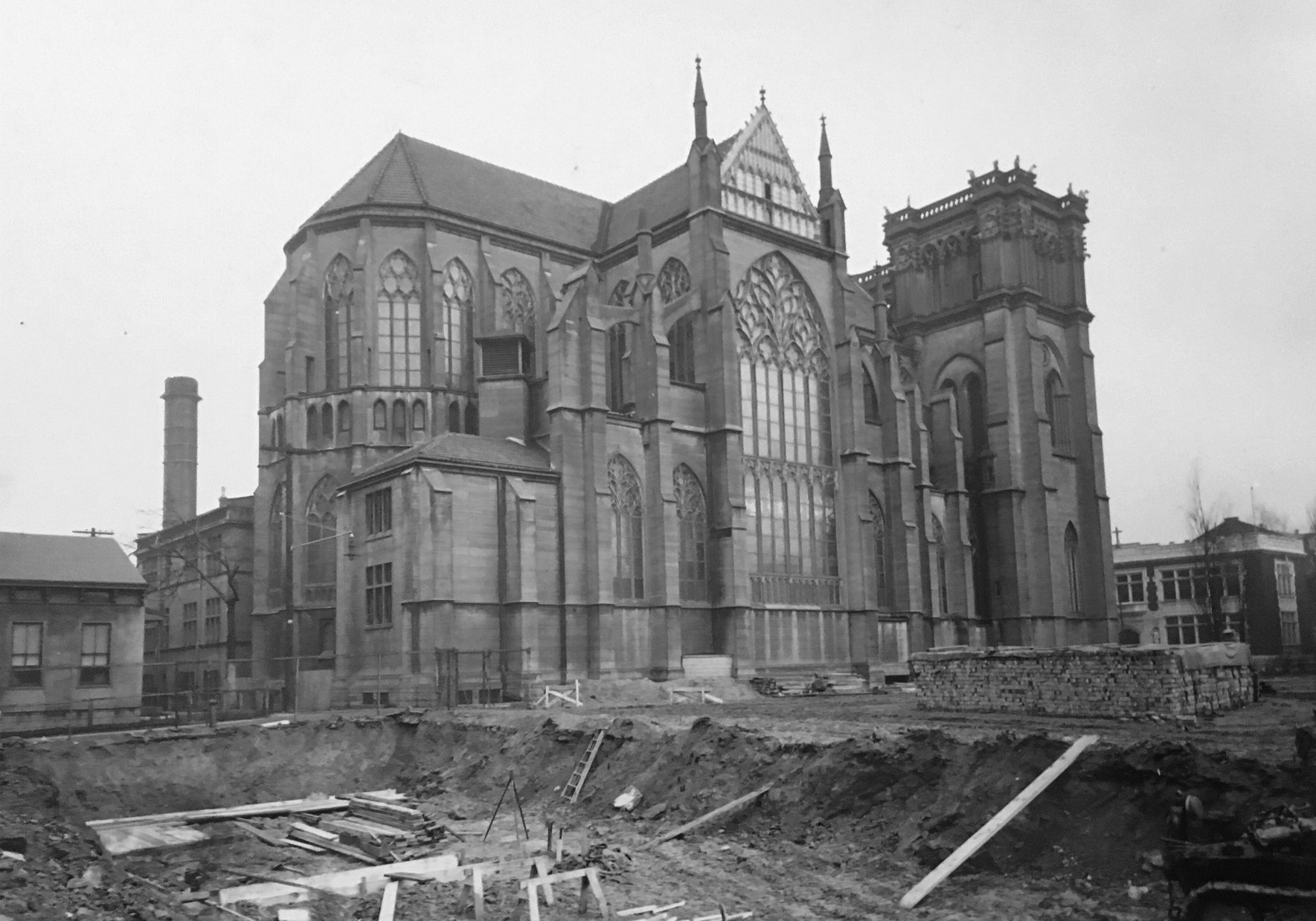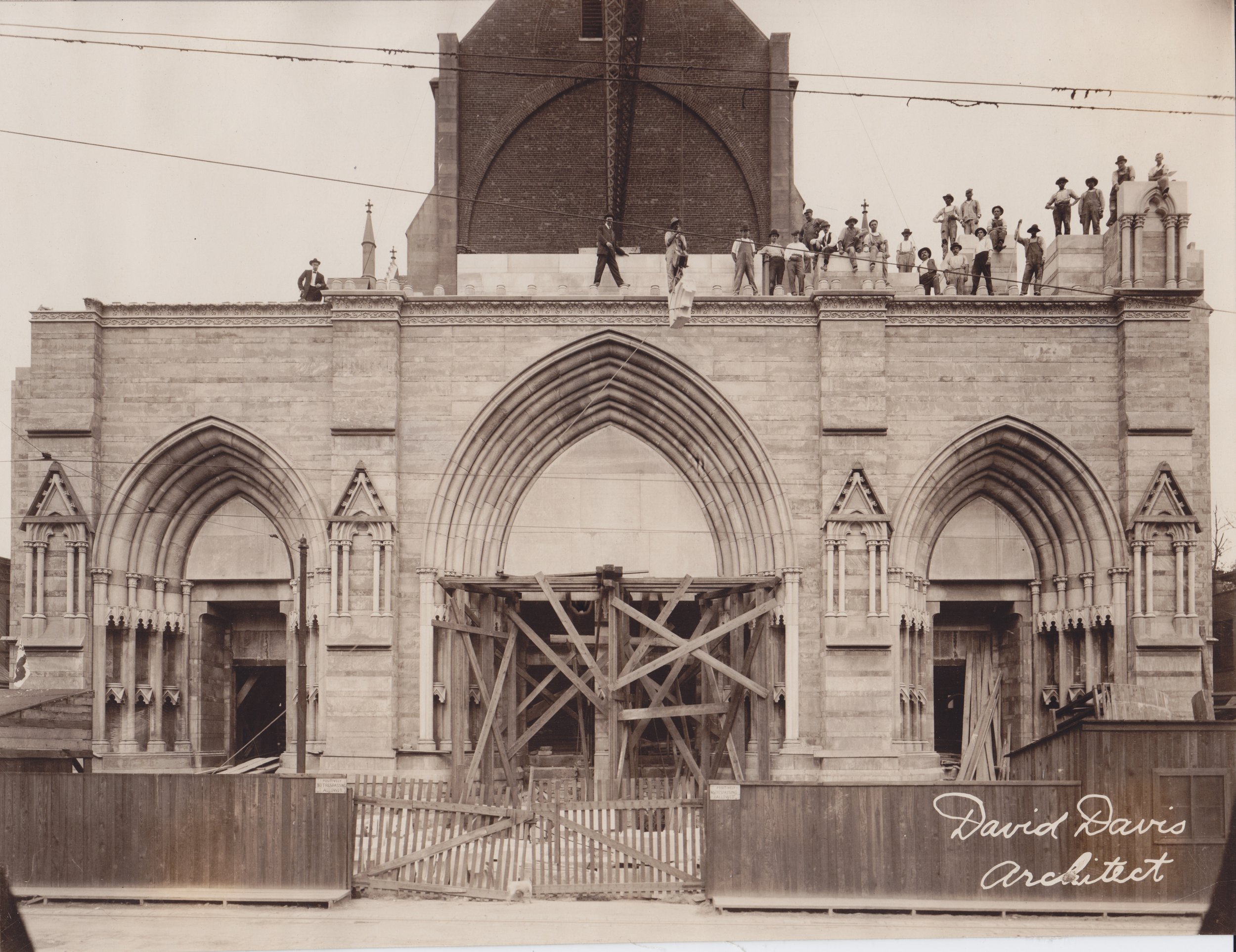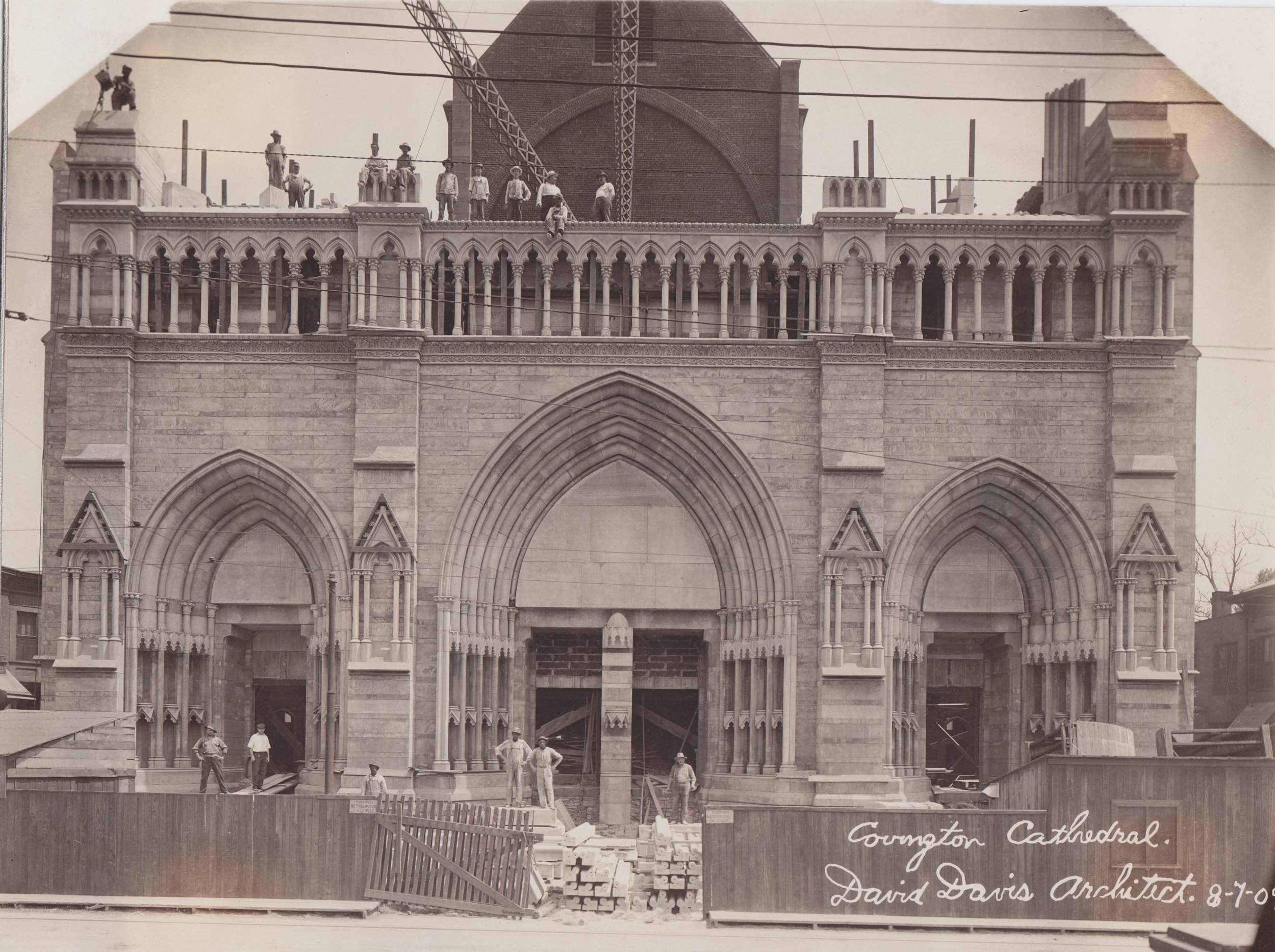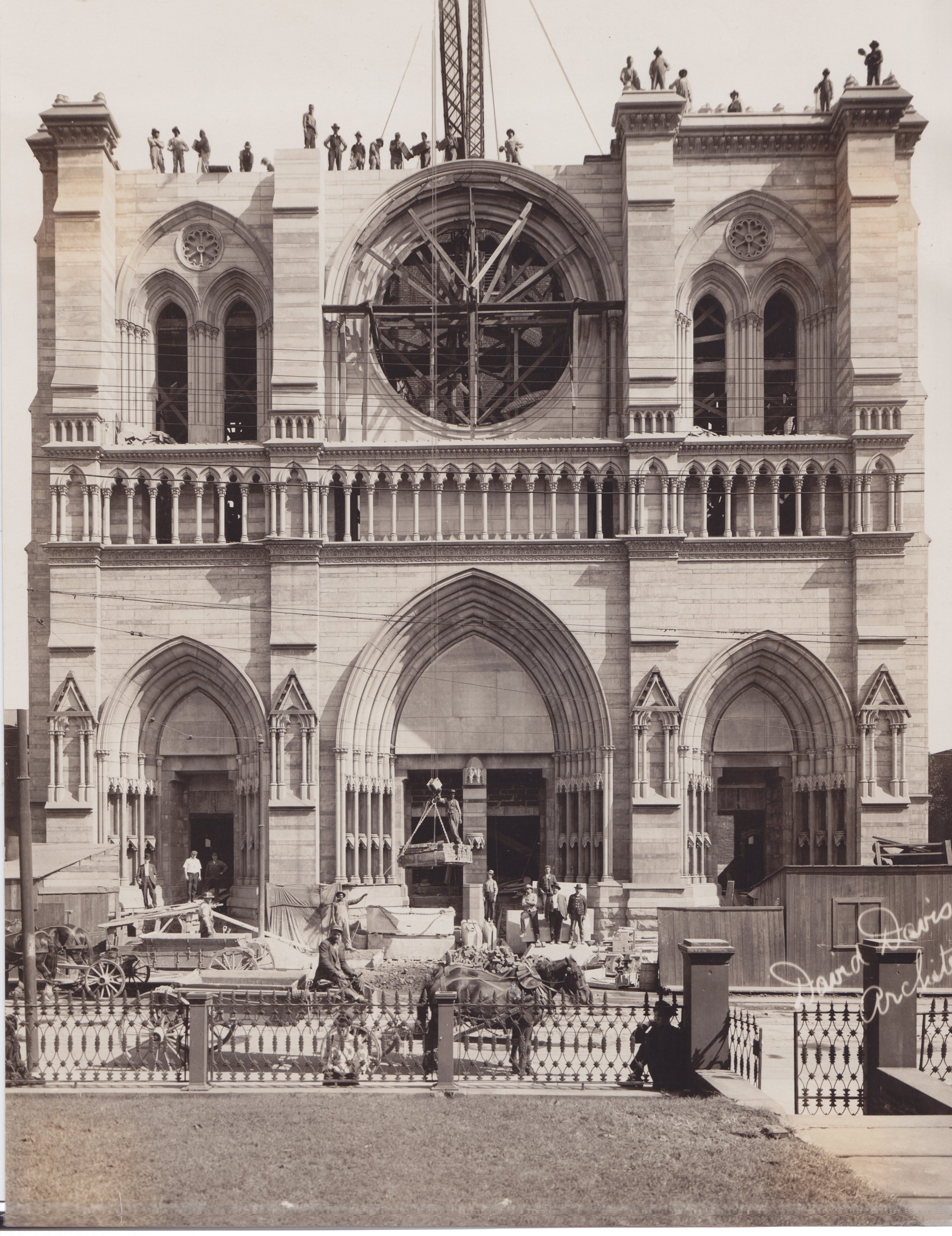
Completed in 1915, Covington’s Cathedral Basilica is affectionately known as “America’s Notre Dame.”
St. Mary’s Cathedral Basilica of the Assumption — America’s “Notre Dame”
On October 1, 1884, Camillius Paul Maes, a Belgium native and Priest of the Diocese of Detroit, was appointed third Bishop of Covington. Transplanting European aestheticism and culture to America, he envisioned a grand, new Cathedral to replace the 1853 wood-framed Cathedral that had fallen into disrepair. Driven by his passion for the Gothic style, he immediately turned his gaze toward the design and construction of a new, magnificent Cathedral that would serve the needs of the growing German and Irish communities.
Photo at right: Bishop Camillus Paul Maes
Building the Cathedral
Bishop Maes never doubted God's providence and that he had been chosen for the building of a new Cathedral.
Maes’ dream was divinely confirmed one day when a young, unknown girl arrived at his residence and placed in his hand one single silver dollar, requesting that he “build a new cathedral with it.” Later, in 1890, James Walsh, Sr., a wealthy Covington distiller, died and bequeathed $25,000 to the Bishop “for a new St. Mary’s Cathedral,” and two years later, James Walsh, Jr., and partner Peter O’Shaughnessy gifted the bishop $100,000 for the same purpose.
Purchasing two homes with large lots at the northeast corner of Madison Avenue and 12th Street as a site for the new Cathedral, Maes set to work right away. For his architect, he chose 31-year- old Leon Coquard of Detroit. Coquard would base his design for the new Cathedral on the interior of the Abbey Church of St. Denis in Paris, France, with the exterior based on Paris’ Notre Dame Cathedral.
Using wood, stone, marble, glass, and gold, the greatest artisans of the 19th century were chosen to build and decorate the holy place that would evoke the Heavenly Jerusalem.
Photo below: Bishop Maes visited the Cathedral construction site almost daily. This photograph from ca. 1896 captures Maes inspecting the Cathedral building progress near the nave crossing.

Lovingly Built
The Cathedral spoke not only of 19th century engineering ingenuity, but of the dedicated immigrants who built it.
Despite an economic depression, Bishop Maes and the faithful put their trust in God and broke ground for the new Cathedral in April 1894. Constructed of brick, terracotta, and locally-quarried Bedford limestone, the Cathedral's construction was carried out almost entirely by German and Irish immigrant craftsmen. Skilled in carpentry, masonry, and sculpting, these truly American craftsmen mirrored their medieval guild counterparts and the artistic imagination that centuries prior had given rise to Europe’s Gothic masterpieces.
Every inch of the Cathedral was lovingly fashioned. Bricks were fired locally; limestone was quarried
and shipped by traincar from Indiana; and farmers even lent horses and carts so that materials could be transported on site with ease. An elaborate system of pulleys and wenches, paired with sheer will power, lifted thousands of metric tons of stone seamlessly into place high atop Covington's cityscape.
By Christmas 1900, the new St. Mary’s Cathedral was ready to be dedicated. The new soaring Cathedral church was a masterpiece. Light filled the interior, giving it the appearance of a shimmering “Cathedral of glass.” The public gasped at its beauty and celebrated its joyous dedication on January 27, 1901.
By 1915, the Cathedral's stone façade with niches and magnificent sculptural work by Clement Barnhorn would be completed, and just over 100 years later in 2021, 24 statues and two tympana would be added to the façade schema, completing the vision of Bishop Maes and those dedicated Cathedral builders.
Photo detail below: The Cathedral’s great North Window depicts the Coronation of Mary as Queen of Heaven and Earth and the Council fo Ephesus of 431 which defined Mary as Mother of God. Completed in the early 20th century by Franz Mayer and Co. of Munich, the window measures 67 feet in length by 24 feet wide and is considered the third largest stained glass window in the world.
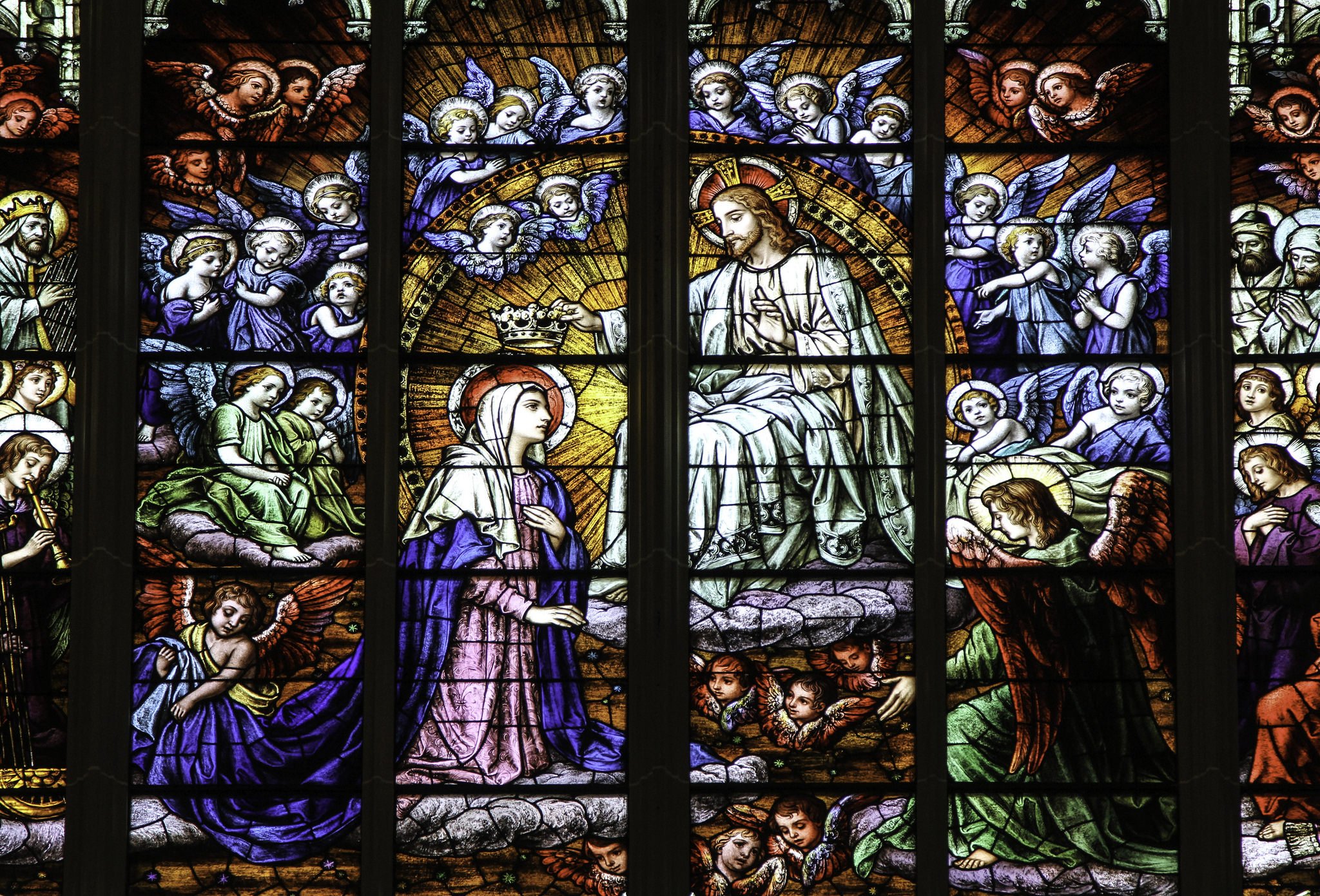
A cathedral is never finished.
An old adage about cathedrals is that they’re never finished — that a cathedral awaits the artistic contributions of each generation of faithful. Covington’s Cathedral Basilica is no exception. In just the last five years, the Cathedral has received several new important works of sacred art.
Photo below: The Maes Crypt Chapel, St. Mary’s Cathedral Basilica of the Assumption
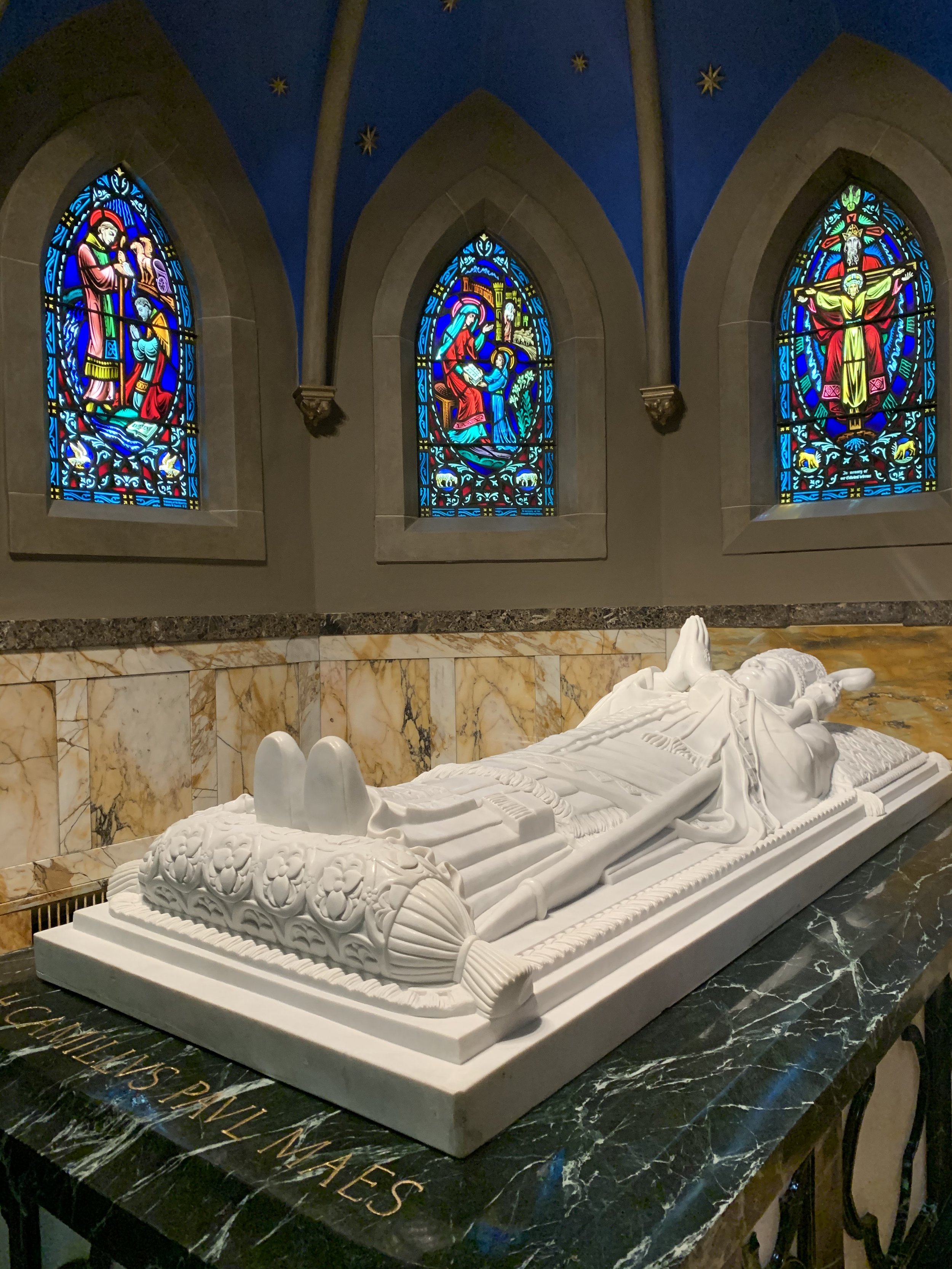
Bishop Maes Crypt Chapel
In 2019, after much prayer, +Roger Joseph Foys, tenth Bishop of Covington, began plans to bring the mortal remains of Bishop Maes to the Cathedral for reburial, honoring his final wish to be buried in the "monument to Christ" that he and God's people built.
Located in the former Cathedral Basilica baptistery, the new tomb of Bishop Maes features a sarcophagus of white and green marble, designed to blend with the Cathedral-Basilica marble work. The lid features a hand-carved white marble effigy depicting Bishop Maes, in full pontificals, lying in repose. Covington’s third and longest serving shepherd is shown with thoughtful motifs taken from the vesture of Covington’s bishops—a reminder of the sacred bond shared by Covington’s ten bishops. The entire tomb sits beneath a starry vault, reminding God’s Pilgrim People that our ultimate goal is Heaven. The Crypt Chapel has since become a place of pilgrimage where the faithful come to pray before the tomb of Bishop Maes.

Cathedral Façade
In 2019, +Roger Joseph Foys, tenth Bishop of Covington began plans to bring the mortal remains of Bishop Maes to the Cathedral for reburial, honoring his final wish to be buried in the “monument to Christ” that he and God’s people built. The transfer of his remains also stirred in Bishop Foys another idea to honor Bishop Maes: the completion of the façade.
After an architectural study, it was determined that the façade’s portal jam niches, buttress niches, and tympana reliefs could structurally support the statuary long envisioned by Cathedral architects Leon Coquard and David Davis.
Philadelphia’s St. Jude Liturgical Arts Studio was awarded the project and world-renowned ecclesiastical artist Neilson Carlin was commissioned to design 24 statues honoring the Diocese of Covington’s parishes and institutions, and 2 tympana bas reliefs to complete the Marian tripart portal schema. Drawing inspiration from the Cathedral’s neo-Gothic architecture and extant sculptural work by 20th century sculptor Clement J. Barnhorn, Carlin’s sculptural designs fuse 19th century aesthetic and tradition with 21st century vision and artistry.

St. Paul Relics Chapel
The Relic Collection of the Diocese of Covington is comprised of over 300 Relics and is one of the largest holdings in the United States. With numerous relics authenticated by Covington’s first bishop, George Aloysius Carrell, S.J., it was Covington’s third bishop, Camillus Paul Maes, who documented the first relic inventory, obtained relics from Europe, and instantiated Relic devotion in the life of the growing Church in Northern Kentucky. Authenticating many of the Relics himself over the course of two decades, Bishop Maes assembled some of the finest and most beautiful relics from the 19th century.
The Relic Shrine of St. Paul was built and installed beneath the Baldacchin of St. Mary’s Cathedral Basilica of the Assumption in 2020. The collection contains some of the Church’s newest saints and blesseds, including: Pope St. John Paul II, St. Maximilian Kolbe, Bl. Solanus Casey, Bl. Stanley Rother, Bl. Miguel Pro, Bl. Carlo Acutis, St. Teresa of Calcutta, St. Damien of Molokai, Bl. Franz Jägerstätter, St. Oscar Romero, St. José Sánchez del Río, Bl. Karl of Austria, and St. Conrad of Parzham.



